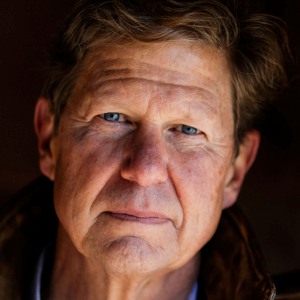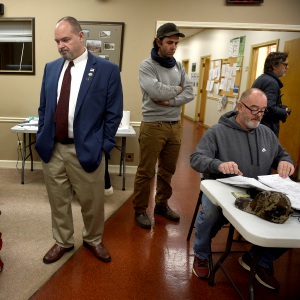Column: Inside the Mormon money machine
| Published: 04-03-2021 10:30 PM |
James Huntsman wants his money back. We’re not talking here about a refund for a defective car battery or food processor. We’re talking about millions of dollars that Huntsman claims to have donated to the Church of Jesus Christ of Latter-day Saints over the years.
Huntsman is scion of a prominent Mormon family and the Huntsman Corp., a chemical company. His brother, Jon, was governor of Utah, a candidate for the Republican nomination for president and ambassador to Russia, China and Singapore. In a lawsuit filed in U.S. District Court for the Central District of California, James Huntsman, who has left the Latter-day Saints, claims that the church has misrepresented how it uses money it collects as tithes from the Mormon faithful.
Does he have a point? Every Mormon who wishes to remain in good standing with the Church of Jesus Christ of Latter-day Saints, including admission to the temple, is required to give 10% of his or her income to the church. This is computed on gross income (before taxes and deductions), not net income. In addition, if the local ward (congregation) embarks on a construction or a renovation project, members of the ward are assessed an additional amount — on top of their tithes — to pay for such projects.
How much money comes into the church annually? Leaders of the Latter-day Saints are famously secretive, but the best estimates are that somewhere around $7 billion dollars flows into the Salt Lake City coffers every year.
And now, to Huntsman’s point, where does the money go? We should first stipulate where it does not go. The Mormon church, unlike, say, Presbyterians or Lutherans or Jewish synagogues, does not have paid clergy. Those who serve in leadership positions at the local level volunteer their time. In addition, many Mormon young people — men, but an increasing number of women — serve two-year terms as missionaries; those costs typically are borne by their families, not the church.
No one disputes that the Latter-day Saints, with its global reach, has administrative expenses — or that the church directs some of its money toward charitable and relief initiatives. But the church also controls vast reservoirs of wealth, including a life insurance company, the largest paid tourist attraction in Hawaii, a chain of radio stations, the Deseret News newspaper and a company called AgReserves Inc., a multinational agricultural corporation and the largest producer of nuts in the United States.
The Mormon church, through its various holding companies, owns more than a million acres of land in the United States, in addition to property in Canada, Mexico, Brazil, Argentina and the United Kingdom. The church owns the largest irrigated farm in the state of Washington, 228,000 acres of farmland in Nebraska and the largest cattle ranch in the world. By some estimates, the Church of Jesus Christ of Latter-day Saints owns 2% of the entire land mass of the state of Florida.
But the real focus of Huntsman’s ire is Ensign Peak Capital, a tax-exempt investment and trust fund owned by the Mormon church. Once again, a great deal of secrecy surrounds this entity, but an executive told the Deseret News in 2006 that “billions of dollars change hands every day.” In March 2020 the fund reported investments of $37.8 billion in stocks and mutual funds, although a whistleblower complaint by a former investment manager in 2019 insisted that the church’s reserve funds totaled nearly $100 billion.
Article continues after...
Yesterday's Most Read Articles
To place that number in context, Harvard University last year reported that its endowment was worth $41.9 billion, and Princeton’s was $26.6. Harvard was founded in 1636 and Princeton in 1746; the Church of Jesus Christ of Latter-day Saints was formed in 1830.
Huntsman’s complaint is that tithe money is going not to religious, missionary, educational or charity work, as the church represents, but rather to investments and to prop up the finances of church interests, such as Beneficial Life Insurance and the City Creek shopping center in Salt Lake City.
The lawsuit, Huntsman insists, is not about faith, but about “fraud and corporate greed.” The church has denied any impropriety and says that it has discretion over the use of money contributed by the faithful. Huntsman disagrees. “Behind the scenes,” his suit reads, “rather than using tithing funds for the promised purposes, the LDS Corporation secretly lined its own pockets by using the funds to develop a multibillion-dollar commercial real estate and insurance empire that had nothing to do with charity.”
Huntsman is seeking the return of approximately $5 million, which he says will be redirected “to benefit organizations and communities whose members have been marginalized by the church’s teachings and doctrines, including by donating to charities supporting LGBTQ, African American, and women’s rights.”
My guess is that the lawsuit faces long odds, but at the very least it shines light on the finances of a very wealthy religious entity. It also serves as a reminder of Jesus’ warning that it is impossible to serve both God and Mammon.
Randall Balmer teaches religion in North America at Dartmouth College, including a course on Mormonism.

 Editorial: Gambling tarnishes America’s sporting life
Editorial: Gambling tarnishes America’s sporting life By the Way: A white nationalist’s many mistruths
By the Way: A white nationalist’s many mistruths Column: The age-old question of what to read
Column: The age-old question of what to read Editorial: Transparency wins in NH Supreme Court ruling
Editorial: Transparency wins in NH Supreme Court ruling
